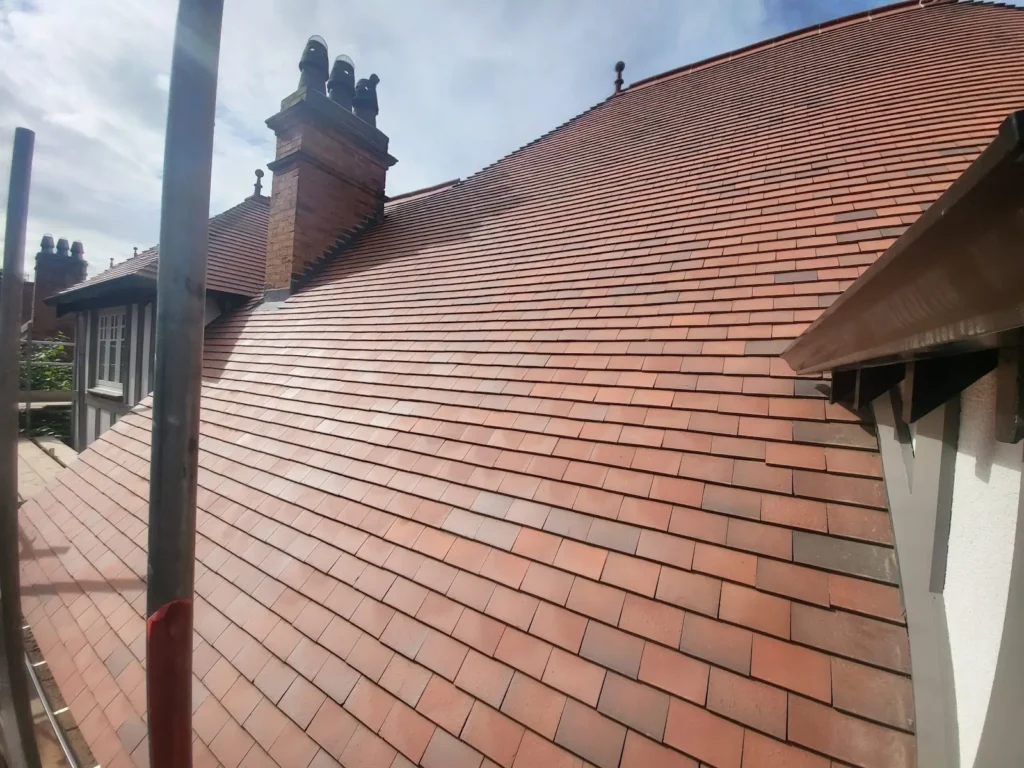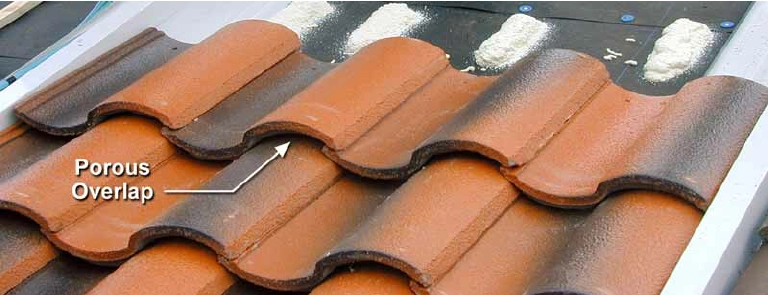Clay roof tiles have been a popular choice for centuries, and for good reason. Durable, weather resistant, and packed with aesthetic appeal, they suit a wide range of architectural styles and are often seen on everything from period buildings to modern homes. With so many types available, choosing the right clay tiles for your roofing project depends on understanding their features, styles, installation needs and performance in different conditions.
This comprehensive guide will walk you through the different clay roof tiles available, exploring their distinctive characteristics and where they are typically installed. Whether you’re restoring a historic property or building something new, this guide will help you choose clay roof tiles that work for your design and environment.
The 7 Types of Clay Roof Tiles
If you’re planning a clay roof replacement or starting a new roofing project, understanding the different types of clay roof tiles available can help you make the right choice. From classic plain tiles to bold barrel styles, each option offers its own aesthetic and functional benefits of a clay tile roof.
1. Plain Clay Tiles
Also known as clay plain tiles, these are small format, flat tiles laid in neat rows with a double-lap installation method. They’re one of the most traditional clay roof tiles, often used in restoration projects or where a heritage aesthetic is important. The timeless, understated look is ideal for listed or heritage buildings and properties within conservation areas.
Key features:
- Small rectangular shape
- Laid in overlapping rows for extra weather protection
- Typically installed with a minimum roof pitch of 35 degrees
Plain tile roofs have a high density of tile overlaps, providing superior protection against rain and wind. They are particularly well-suited to harsh weather conditions in the UK and require little maintenance once installed properly.

2. Interlocking Clay Roof Tiles
Interlocking clay tiles are designed specifically to make installation faster and more efficient. Instead of overlapping like plain tiles, they slot together using channels or grooves that lock them in place. This style means fewer tiles per square metre, which can reduce costs and labour time.
Key features:
- Larger format
- Single lap installation
- Often have high profile ridges for strong water runoff
Interlocking tiles are available in various types, including flat and curved designs. They’re commonly used in new builds where time and cost efficiency are priorities, but still offer the traditional look of natural clay.
3. Roman Clay Tiles (Including Double Roman)
The Roman clay tile is a nod to classical antiquity, designed with alternating flat and curved sections to guide water off the roof effectively. Double Roman tiles feature a more pronounced curve, giving them a bold, undulating pattern across the roofline.
Key features:
- Flat pan with raised roll sections
- Low minimum roof pitch (usually 17.5 degrees or more)
- Ideal for Mediterranean-style or picturesque Roman roofs
These tiles provide excellent water drainage and can handle high rainfall without compromising performance. Their distinctive appearance suits both traditional and modern buildings looking for a roof with strong visual character.
4. Barrel Style Tiles / Mission Tiles
Barrel style tiles, also known as mission tiles, are semi-cylindrical and typically laid in alternating concave and convex rows. This style originated from regions with hot, dry climates, but is now used globally for its distinctive, rustic charm.
Key features:
- Curved, cylindrical profile
- Traditionally installed using mortar or mechanical fastenings
- Offers a high level of airflow and heat deflection
Mission tiles can be more labour-intensive to install and may require special fixings to fasten clay roof tiles securely. However, the result is a visually striking roof with excellent performance in both dry and wet climates.

5. French Clay Tiles
French tiles combine interlocking technology with classical styling. They often feature a pronounced curve and deep side channels that provide excellent waterproofing.
Key features:
- Interlocking mechanism
- Suitable for roof pitches as low as 22 degrees
- Elegant profile, great for both rustic and urban styles
These tiles are popular in areas of Europe but have become a favoured option in the UK for homeowners seeking high quality, aesthetically pleasing roofing materials that blend modern functionality with a traditional look.
6. Flat Clay Tiles
Flat clay roof tiles offer a sleek and minimal aesthetic, making them a great fit for modern homes or renovations aiming for clean lines. These can come as plain tiles or interlocking varieties, and are available in a wide range of colours and finishes.
Key features:
- Smooth, low-profile appearance
- Various colours and finishes
- Versatile for different roof shapes
Because of their simple shape, flat clay tiles are one of the most adaptable styles. They’re often chosen for their ability to fit in with different architectural styles, and are popular among designers who want a modern edge without sacrificing traditional clay durability.
7. Decorative or Ornamental Clay Tiles
While not a separate structural type, ornamental tiles add unique characteristics to clay tile roofs. These can include crested ridge tiles, finials, or specially-shaped tiles placed at gable ends or around chimneys.
Key features:
- Designed for visual appeal
- Often used on heritage or bespoke builds
- Can be combined with standard tile types
Decorative clay tiles are a great way to add personality or historical detail to a roof, particularly on listed buildings or projects where authenticity and craftsmanship are important.
Comparing Clay vs Concrete Roof Tiles
When choosing between clay and concrete roof tiles, it’s useful to understand the trade-offs. Concrete tiles tend to be heavier and absorb more moisture than clay, which can reduce their lifespan. Clay tiles are fired at higher temperatures and have a denser, more durable structure. They’re also colourfast, meaning their appearance doesn’t fade over time like some concrete roof tiles.
That said, concrete options are often cheaper and available in more styles, which may appeal to homeowners on a tighter budget. However, if you’re looking for higher quality, distinctive clay roof tiles are usually the better long-term investment.
Choosing the Right Clay Roof Tile
There’s no one-size-fits-all answer when it comes to the best clay roof tile. Your choice should be guided by factors like:
- The style of your property
- Your roof’s pitch and structural load-bearing capacity
- Your budget and maintenance preferences
- Local climate and exposure to harsh weather conditions
- The condition of your roof (how long a clay tile roof can last)
Make sure your roof design meets the lowest angle or minimum roof pitch for the tile type you select. For example, plain tiles need a steeper pitch than interlocking clay tiles. Also consider colour and texture. Clay roof tiles are available in everything from deep reds to pale ochres, with smooth or sanded finishes depending on the particular type and brand.
Final Thoughts
Clay tiles are more than just a roofing material. They offer a combination of durability, traditional look, and low maintenance that makes them a sound investment for many building types. Whether you’re after the classical lines of barrel style tiles, the practical benefits of interlocking clay, or the refined simplicity of clay plain tiles, there’s a style suited to your project.
If you’re considering a clay roof replacement or need assistance with your existing roof, C Kearney Roofing offers expert clay roofing services tailored to your needs.
Contact us today to discuss how we can help protect your home with a high-quality clay roof!
FAQs
What is the minimum pitch for installing clay roof tiles?
The minimum pitch depends on the style of clay tile you’re using. Traditional clay tiles like plain tiles typically require a minimum pitch of 35 degrees due to their double-lap design, while interlocking clay tiles can often be installed on roofs with a pitch as low as 17.5 or 22 degrees. Always check the manufacturer’s guidelines to ensure proper installation and weatherproofing.
Are clay tiles suitable for modern homes or just traditional properties?
Clay roof tiles are extremely versatile and come in a range of distinctive roof tile styles to suit both traditional and contemporary architecture. While traditional clay tiles like plain or Roman styles are ideal for heritage homes, sleek flat or interlocking clay tiles can give modern homes a clean, sophisticated look.
What makes traditional clay tiles different from other roofing options?
Traditional clay tiles are known for their timeless appearance, exceptional durability, and natural weather resistance. Unlike concrete or synthetic alternatives, clay tiles retain their colour for decades and offer a more authentic, high-end finish. They’re especially valued in conservation areas or on period properties where maintaining a traditional roofline is important.